Last updated on September 29th, 2023 at 04:26 pm
Did you know a single bee can visit up to 5,000 flowers in one day? Spring is not just a time of renewal for us; it’s a lifeline for these buzzing workers.
As they emerge from hibernation and search for food, they must find the best flowers to get the energy they need to build their nests.
In this article, we’ll explore some of the top options for providing sustenance to these hardworking insects, including bee balm, anise hyssop, sage and more. Spring, here we come!
The Best Flowers For A Bee Friendly Garden in Spring
So, what makes for the best flower for bees in early spring? They need to provide a reliable source of nectar and pollen early in the growing season.
While there are lots of different types of flowers that bees are attracted to, certain species are especially beneficial.
Let’s look at some food-filled varieties for bees in the spring months and how you can turn your garden into a buzzing feast.
Bee Balm: The Purple Magnet for Native Bees
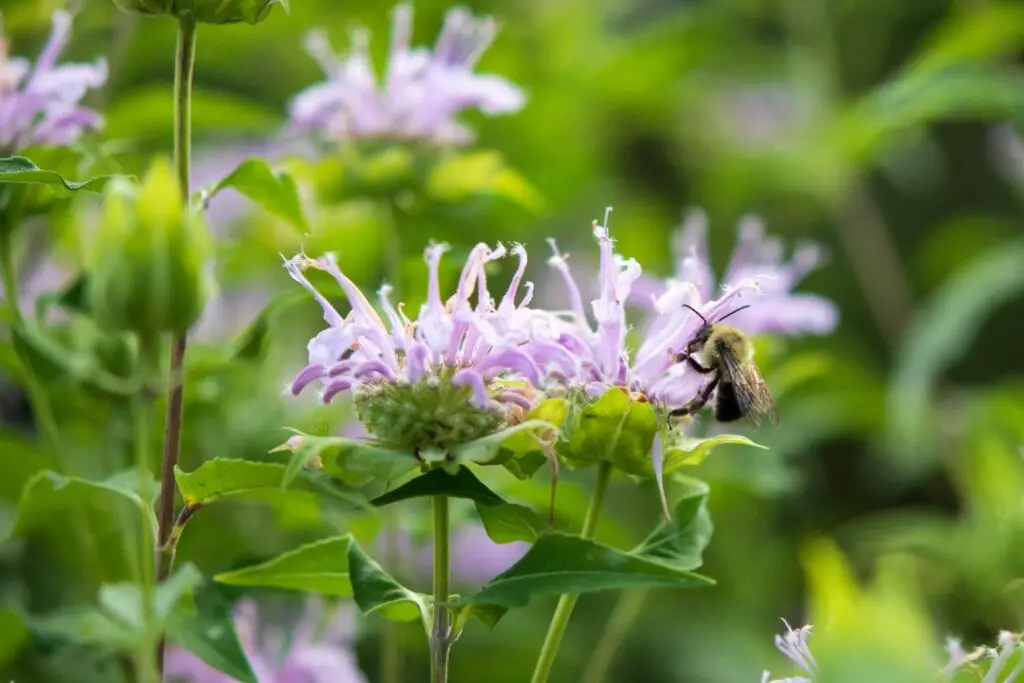
- Bloom Time: Late Spring, Early Summer
- Soil Preference: Moist Soil
- Sunlight: Full Sun, Partial Shade
- Bee Types Attracted: Native Bees
- Maintenance Level: Low
Bee balm, also known as Monarda, is a vibrant purple flower that is an excellent food source for bees.
This plant thrives in full sun or partial shade and blooms in late spring and early summer. It’s a great option for attracting native bees, hummingbirds and butterflies.
Bee balm is also easy to grow and doesn’t require much maintenance.
It prefers moist soil but can tolerate a wide range of soil types. Additionally, it’s a spring perennial, so it will come back year after year, providing a consistent food source for bees.
Anise Hyssop: The Mason Bee’s Favorite
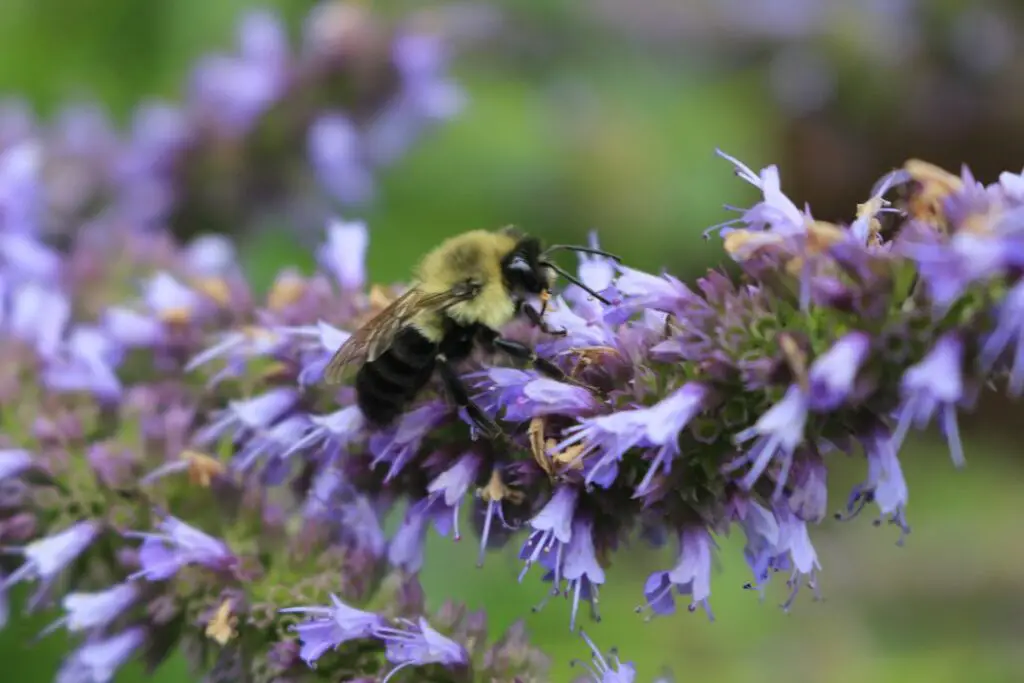
- Bloom Time: Late Spring, Summer
- Soil Preference: Well-Draining
- Sunlight: Full Sun, Light Shade
- Bee Types Attracted: Mason Bees
- Maintenance Level: Moderate
Another great option for spring plants is Anise Hyssop. This plant produces purple flowers that bloom from late spring through summer, making it an ideal food source for bees throughout the growing season.
Anise hyssop prefers full sun to light shade and can grow up to four feet tall.
It’s a hardy plant that can tolerate a range of soil types as long as they’re well-draining.
Anise hyssop is particularly attractive to mason bees, which are important pollinators for many types of plants.
Sage: The Culinary Herb That Bees Love
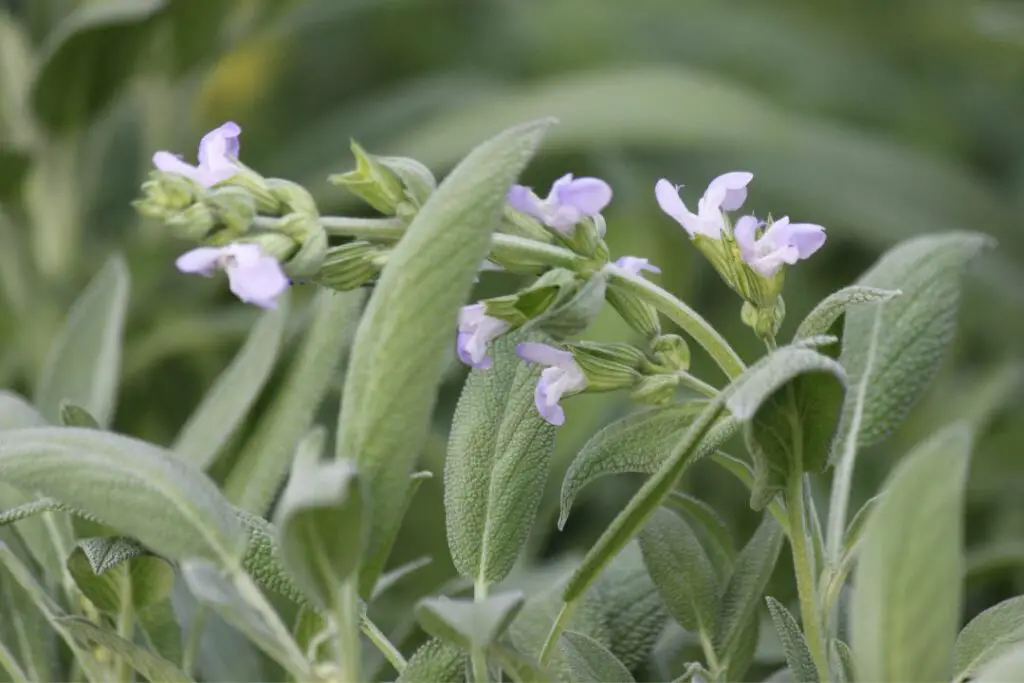
- Bloom Time: Late Spring, Early Summer
- Soil Preference: Well-Draining
- Sunlight: Full Sun
- Bee Types Attracted: Bumblebees, Honeybees
- Maintenance Level: Low
Sage is a herb that produces beautiful spikes of purple flowers in the late spring and early summer.
While it’s often grown for culinary purposes, it’s also a fantastic food source for pollinating bees. Sage is easy to grow and prefers full sun and well-draining soil.
This plant is attractive to bumblebees, honeybees, and solitary bees, which makes for a myriad of bee species in your garden. Better yet, it smells amazing!
*Pro tip – It’s also an excellent option for gardens or vegetable gardens because it can repel unwanted insect species, like cabbage moths.
Hellebores
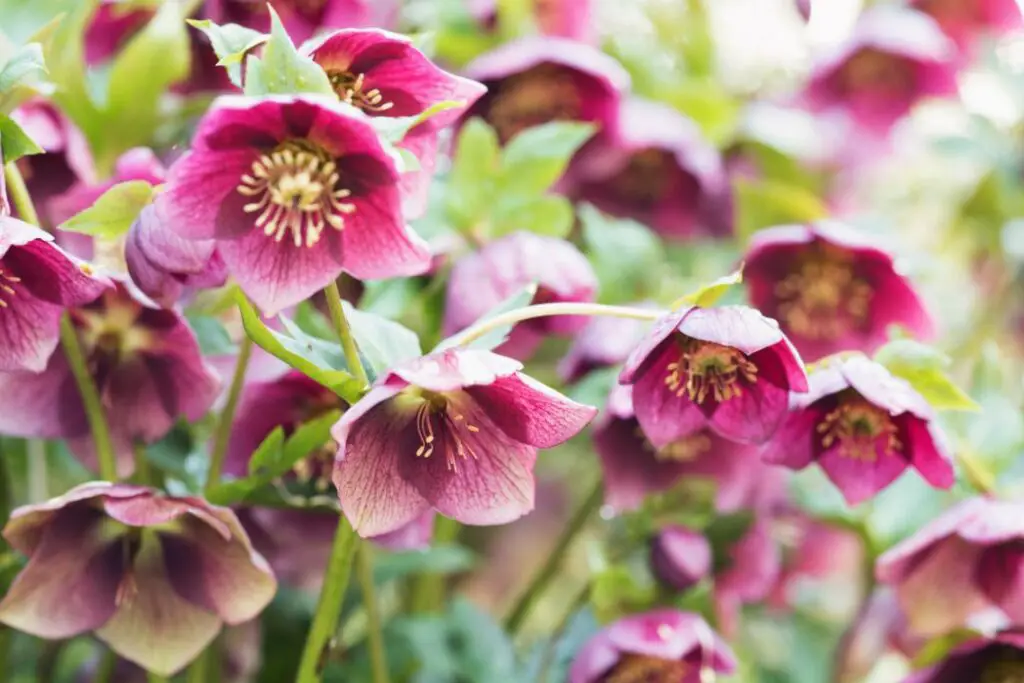
- Bloom Time: Early Spring
- Soil Preference: Moist, Well-Drained
- Sunlight: Partial to Full Shade
- Bee Types Attracted: Various
- Maintenance Level: Moderate
- Special Note: Toxic if ingested
These gorgeous flowers add a pop of colour to your landscape and provide a vital food source for bees during the early spring months.
These are some of the first plants to flower in the spring, offering a much-needed source of nectar and pollen for our buzzing friends emerging from hibernation.
Hellebores typically bloom for several weeks or even months, providing a consistent food source for bees when resources are in short supply.
They prefer partial shade to full shade, and they do best in moist, well-drained soil and benefit from a light application of compost or a balanced, slow-release fertilizer in the spring.
*Important tip – Hellebores are beautiful and beneficial for bees but toxic if ingested. Be sure to wear gloves when handling Hellebores and keep them away from small children and pets.
Borage: The Blue Nectar Factory
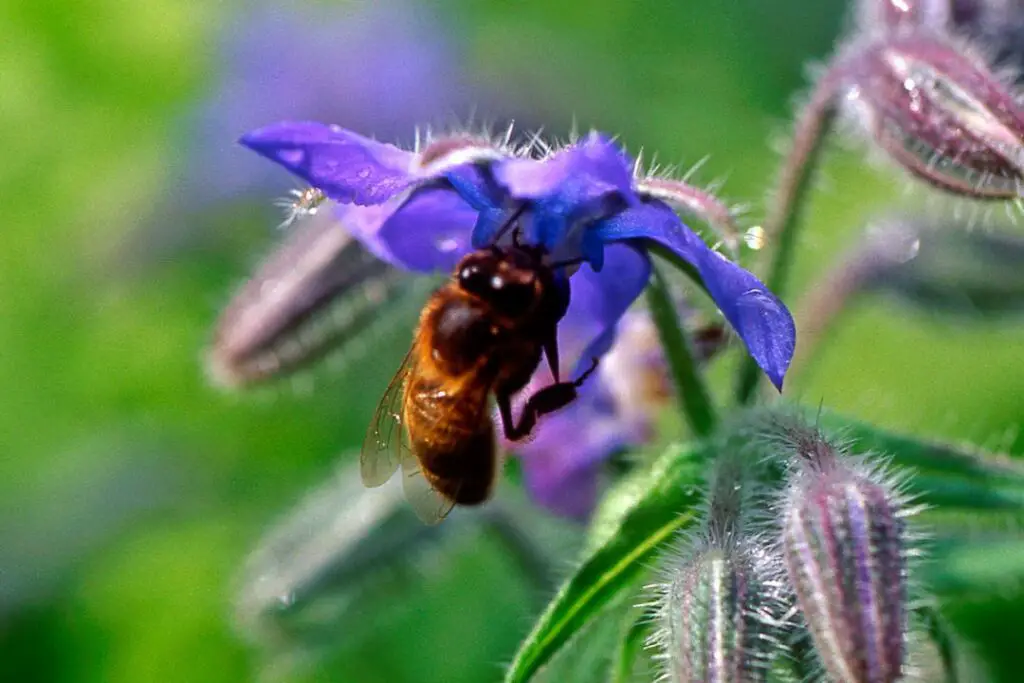
- Bloom Time: Late Spring, Early Summer
- Soil Preference: Well-Draining
- Sunlight: Full Sun
- Bee Types Attracted: Various
- Maintenance Level: Low
Borage is a beautiful blue flower that produces a large amount of sugary nectar, making it a perfect food source for all sorts of bees.
It blooms in the late spring and early summer and prefers full sun and well-draining soil.
This plant is also incredibly easy to grow, making it an excellent option for novice gardeners.
It’s a self-seeding annual so it will drop seeds and return year after year, providing a consistent food source for bees and other pollinators.
White Wild Indigo: The Native Choice
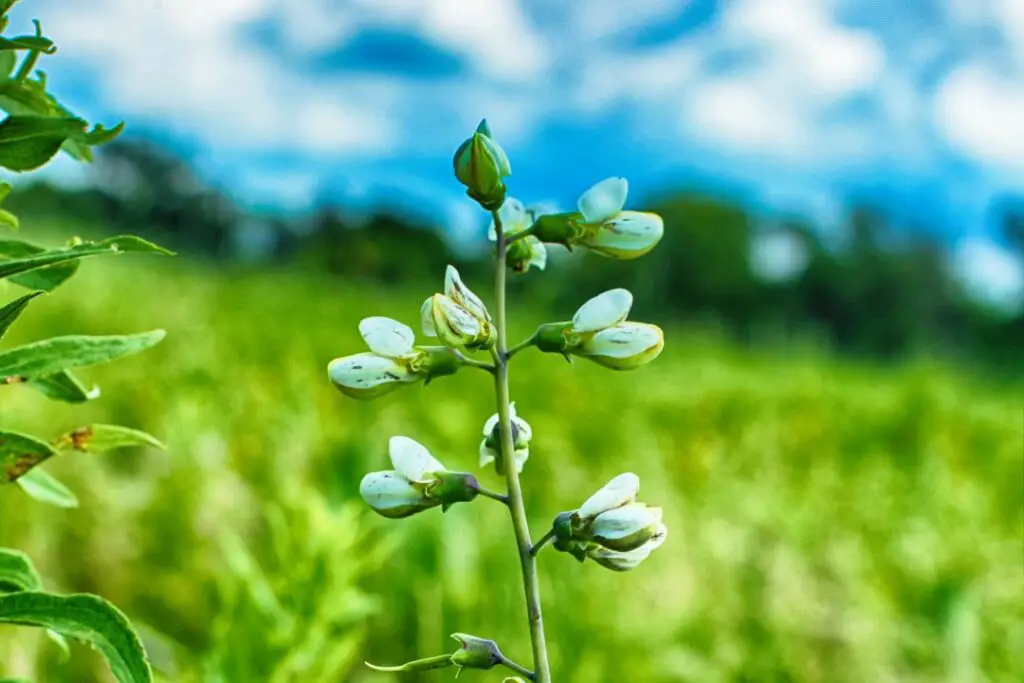
- Bloom Time: Late Spring, Early Summer
- Soil Preference: Moist, Well-Drained
- Sunlight: Full Sun to Partial Shade
- Bee Types Attracted: Various
- Maintenance Level: Low
Another perfect option for providing food for bees in the spring is the white wild indigo (Baptisia alba). This hardy perennial produces tall spikes of white, pea-like flowers that are a favourite of many pollinating insects, including bees.
White wild indigo is a native plant that thrives in full sun to partial shade and moist, well-drained soil. It’s a relatively low-maintenance plant that can tolerate various soil types, making it an excellent option for your garden.
One of the benefits is its long blooming period. It typically blooms from late spring through early summer, providing a steady source of nectar and pollen for bees.
An attractive plant can add a striking vertical element to your garden. Its tall spikes of flowers can be a beautiful backdrop for other spring plants, and its deep roots make it an excellent help for stabilizing soil and preventing erosion.
While white wild indigo may not be as well-known as some of the other plants on this list, it’s worth considering for its value as a food source for bees and its ornamental value in the garden.
Additional Considerations
While these are some of the best flowers for bees in spring, it’s important to note that providing a wide range of plants is key to supporting a healthy bee population.
- Bees are attracted to various colours, shapes, and sizes of flowers, so including a diverse mix of species plants in your garden will yield the best results.
- Plant flowers in clusters rather than single plants. This makes it easier for bees to find and access nectar and pollen and reduces the time required to forage, making for healthier, less exhausted worker bees.
- Aim for flowers that are easy to access. This is especially important for species of bees with shorter tongues.
Conclusion
Providing the best flowers for bees in spring is an important way to support these crucial insects as they emerge from hibernation and begin their search for food.
Bee balm, anise hyssop, sage, joe pye weed, and borage are just a few of the top options for providing sustenance to bees during the growing season.
When selecting plants for your garden, consider the needs of native pollinators and choose a wide range of species to ensure that bees have access to a consistent food source throughout the year.
By planting just one of the options on this list, you’ll be doing your part to support a healthy and thriving bee population.




